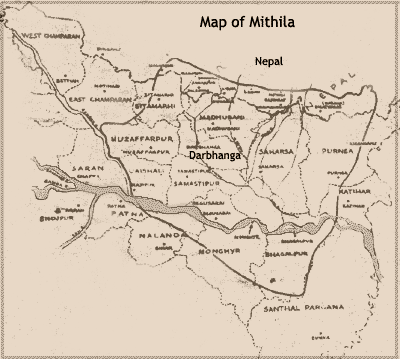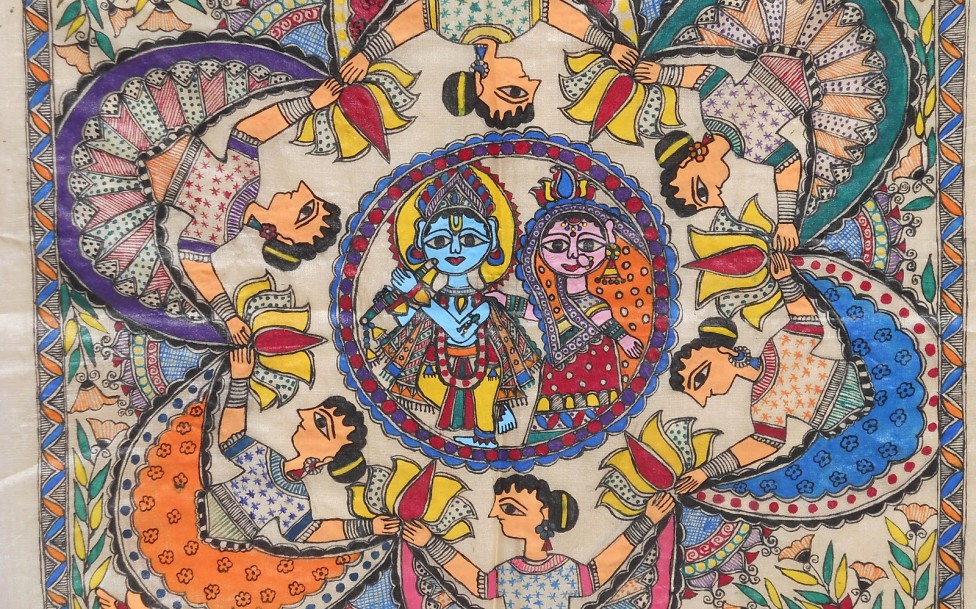This post concerns my stint as a Research Associate at the National Institute of Design, Ahmedabad, where courtesy my two great friends, both husband and wife now, gave me a chance to work for the project of documenting the arts and crafts of India for the project of ‘Handmade in India’ during the year 2003. Now as luck would have it, nobody in the project, as I learnt subsequently, was ready to go to document Bihar and Jharkhand, since the job required extensive travel to remotest villages spread all over these two sadly infamous states then, hence the editor and chief project coordinator, Aditi Ranjan of the NID though I was fit for this assignment as I projected a ‘devil may care’ kind of attitude at that time, and this was considered as a plus point for this sojourn of mine in the above mentioned places. Little did I realize that this opportunity, which I just grabbed to get a chance to travel to what I considered exotic places, would open my eyes to the richness and the magnanimity of the Indian people, and retrospectively I consider this stint of mine in the NID as my own discovery of India, as I got a chance to travel to places like Bihar, Jharkhand, Himachal and J&K.
The touring teams were sent in pairs, one researcher and one photographer, and the aim was to capture the entire gamut associated with the practice of handicrafts in different parts of India, both photographically and by written documentation. My first trip in this project was to Bihar and Jharkhand, and places like the interior of Gaya, which me and my partner toured, were hotbeds (still may be) of Naxal activities, and the lawlessness that was associated with these two states probably made my partner cautious and he was the one looking at the practical side of things such as basic safety, or at least trying to do that, and I was the one behaving like a bird freed from a cage, and the subsequent experiences that I had reinforced my view of that I got what I really expected and the attitude that I projected helped me to overcome certain perception barriers that otherwise may have had prejudiced my approach to this trip. Landing in Dharbhanga from Patna, the kind of poverty I witnessed stuck me as a bolt from the blue, however the shock was soon overcome after I got engrossed and experienced the richness of the culture, the people, the lifestyle and of course, the art and craft and the way folklore and all the customs and traditions, especially of the Mithila region, influenced the arts and crafts that is being practiced in the Mithlanchal region of North Bihar bordering Nepal.
Same was the experience of the visit to Munger (from what I witnessed, I consider this place to be the gun capital of the land of the ‘diamond senas’ and bizarre stuff like that. Also, roaming through the interior villages of the state of Bihar, when Lalu Raj was at its helm and social anarchy had split the social fabric in its entirety (hope this has changed since then, as more than a decade has passed since my visit), I got a chance to have lunch at the home of a good soul, who was kind enough to offer me and my partner some delicious and finger licking food and a deep insight to the anarchy prevailing in the state at that time, where he told me that the political repression of the so called ‘upper castes’ was rampant, and such groups were not allowed to voice any dissent. I recorded this and the stark differences in the way say Mithila or Madhubani Paintings were being drawn both by the so called ‘upper and lower’ castes, and while the difference was striking and worth documenting, which I did, I could not be competent enough to document them in a manner that would help me convince the editor (Aditi Ranjan) that such kind of social prejudices had really a significant impact on the way art and craft was practiced in Bihar, and she refused to believe my version of putting such delicate and sensitive issues so bluntly in my write ups, which I think that she did rightly so, since I was not mature enough to understand what I had witnessed in the villages of the interior of Madhubani district, or in the Gaya district of Jharkhand as far as things like castism were concerned.
Whatever the case, I also witnessed some encouraging developments in a small village near the Muzaffarpur town, where women of a village me and my partner were visiting to document the Sujini embroidery, and this was my first glimpse of social empowerment that women of the cooperative that we visited had formed. Whatever the social divisions may be, I must say that the kind of rich experiences that I witnessed during my sojourn in Bihar, some part of that place stayed in me forever and still is alive, and I have dared to title this write up of mine on the Discovery of India, by none other than Nehru (the respect comes more from his reputation as a writer than as a politician and the first PM of India), who had his own Discovery of India on a giant scale, something that was written down by him in the book of the same title, and the masterpiece has been put into film by the film maestro Shyam Benegal in his Discovery of India television series. While my discovery of India was not on such a huge and a grand scale such as Nehru’s, after successfully completing the Bihar and Jharkhand trip, I got the plum job as a reward to tour Himachal and subsequently the J&K (excluding Ladakh). My sojourns in the east and and the north of India left some indelible impressions on me, and I thank the faith that the soft spoken Aditi Ranjan had on me and she tolerated my eccentricities but still gave me chance to tour all these incredible places.
We all must have our own discoveries of India, since India is thankfully not a homogeneous entity, and such discoveries, some of them may have a purpose such as mine had, or some be just plain wanderlust or exploration, give valuable lessons in various facets of life that remain with the person forever, for as someone rightly pointed out, ‘Knowledge once discovered cannot be retracted from the recesses of the mind’.
Image Reference: http://4.bp.blogspot.com/-g9Zy5Ui31DQ/UTwhQmyc6SI/AAAAAAAAGvg/GTwLob4rIj8/s1600/DSCN4110.JPG http://www.csuchico.edu/anth/mithila/images/mapmith1.gif


Leave A Comment